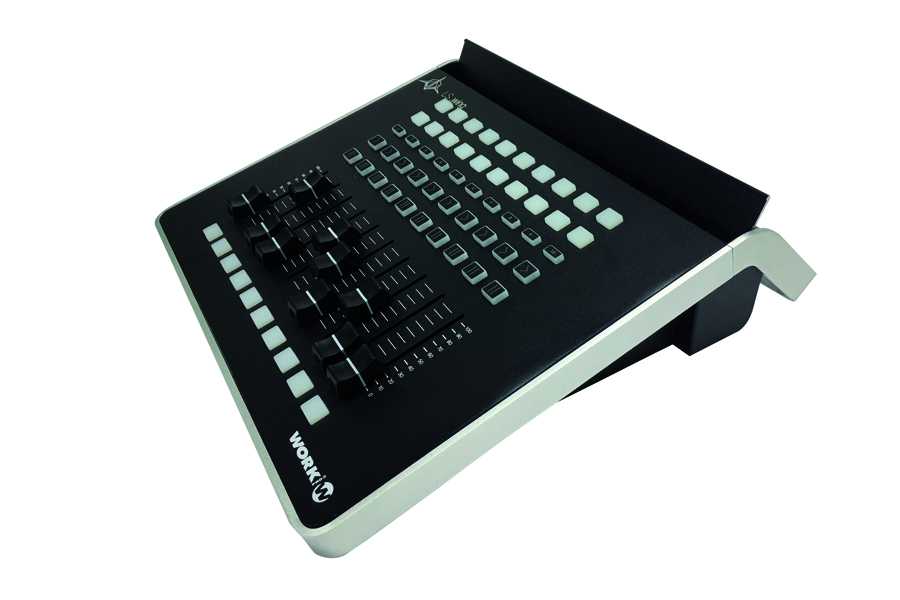WORK Pro Audio expands LightShark family
- Details

Launched in 2017, LightShark was the first DMX-based hardware lighting console range to offer wireless, browser-based control from a multi-touch smartphone or tablet, whilst also providing a rugged and intuitive hardware user interface in the form of the LS-1 unit. The new LS-Wing, which is slightly narrower than the original LS-1 but still comfortably holds a 12.9-inch iPad Pro on its top surface mounting area, connects to the LS-1 via Ethernet and allows users to expand the physical controls available in their LightShark systems.
Each LS-Wing adds 20 backlit buttons and 10 Playbacks, plus two further universes of DMX control (that is, a further 2 x 512 channels of lighting control) and an extra three Ethernet ports, while a pair of USB connectors allow users to charge the associated tablets or mobile devices being used to control their LightShark system.
Four different models of LS-Node are available: the LS-Node1, LS-Node2, LS-Node 4 and LS-Node8, each of which adds its respective number of freely configurable DMX Universes to the connected DMX-capable lighting system, which can be LightShark or any other manufacturer’s DMX system.
“Even before LightShark was launched last year, user feedback was telling us that we were offering a compelling alternative in the lighting control market, and the success of the system since its launch has confirmed that,” comments Equipson CSO Juan Jose Vila. “These new additions to the system allow LightShark users to configure their system exactly as they want it. The number of channels, physical controls and connectivity in the system can now be tailored to customers’ precise requirements, while leaving the door open to expand the system as required in the future.”
(Jim Evans)
















